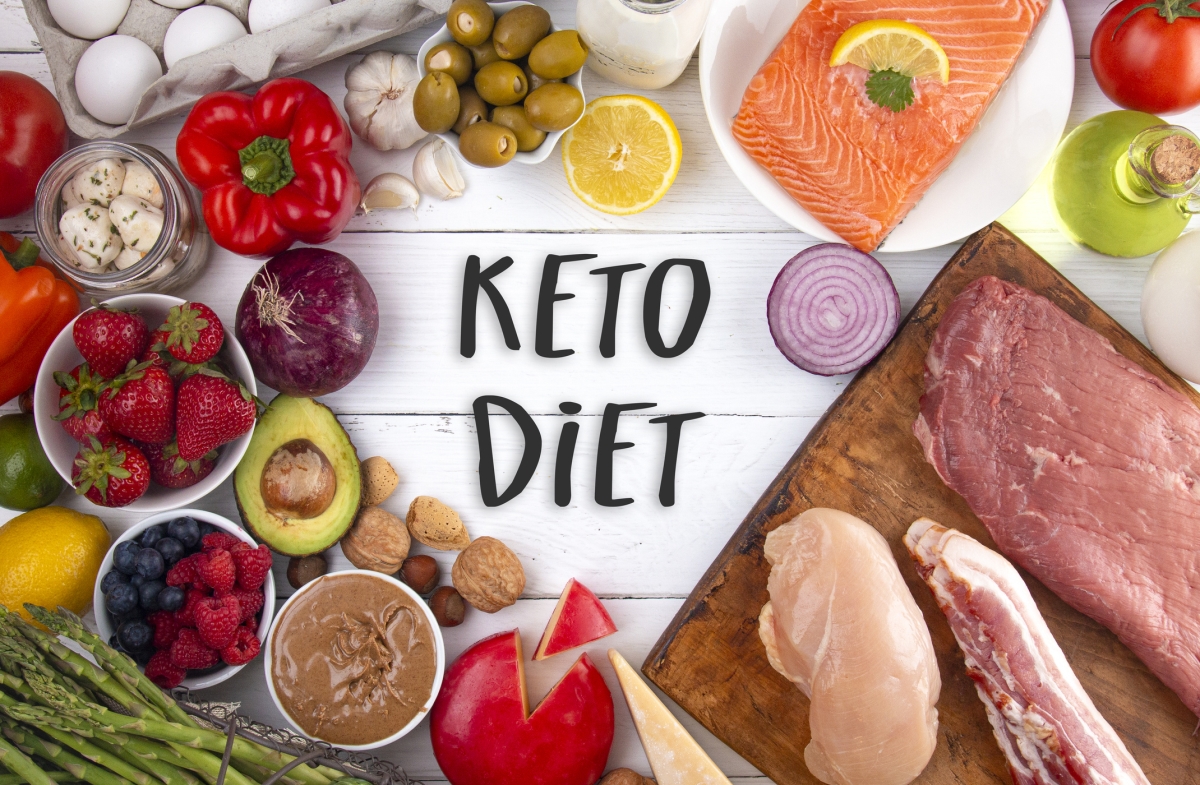
Beginning Your New Diet: How To Start Keto
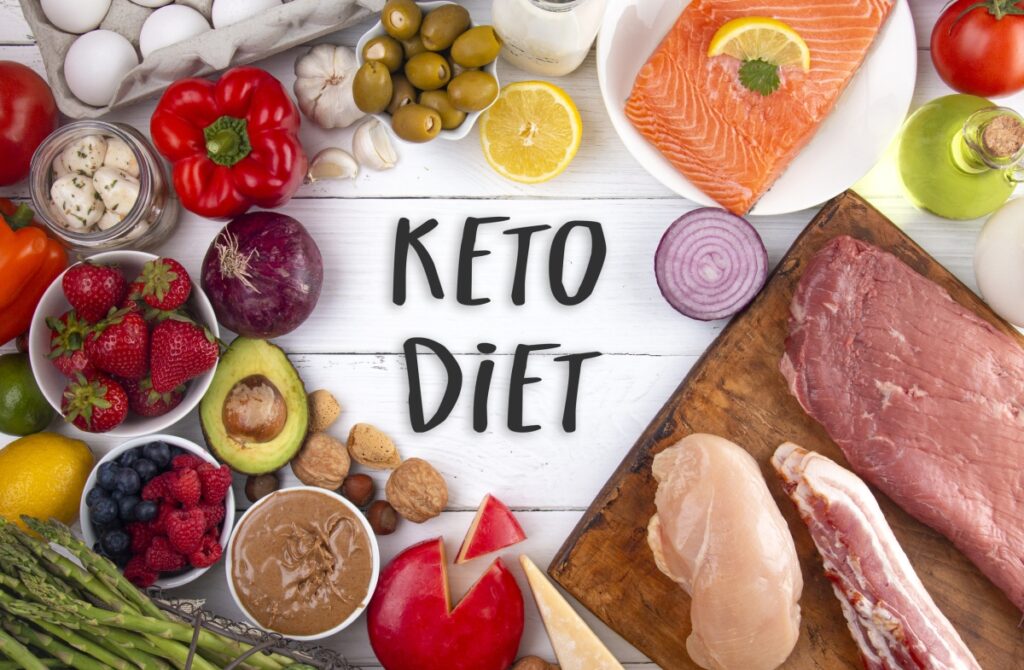
Although I definitely have the keto genes and do really well in ketosis, my keto journey hasn’t always been so glorious. I’ve messed up countless times and lived to tell embarrassing tales. I’ve also mistakenly assumed that keto was right for everyone (it’s not!).
In this article, I’ll share the basics of starting on a ketogenic diet, along with how to avoid the pitfalls and how to know if it’s right for you.

What Is a Ketogenic Diet?
Traditional ketogenic diets are low-carb, moderate protein, and high-fat. The goal of keto is to enter ketosis, which means that your body is fueled primarily by ketones.
It’s important to remember that not all low-carb diets are keto; eating low-carb and too much protein is possible, which will keep you out of ketosis. Overall, keto is very close to no-carb and high-fat.
Health Benefits of Keto
One of the reasons the keto diet is so popular is that it is a sharp contrast to the Standard American Diet (SAD), which is high-carbohydrate. Some health benefits of keto include:
- A boost in brain function and cognitive clarity
- Reduced blood pressure
- Better insulin sensitivity and stable blood sugar
- Diminished appetite and cravings
- Reduced inflammation
On a SAD diet, the high-carbohydrate nature of the diet causes blood sugar spikes and dips. In turn, this can cause a constant craving for higher-calorie foods. Keto also stimulates the production of more mitochondria, which can increase metabolism.
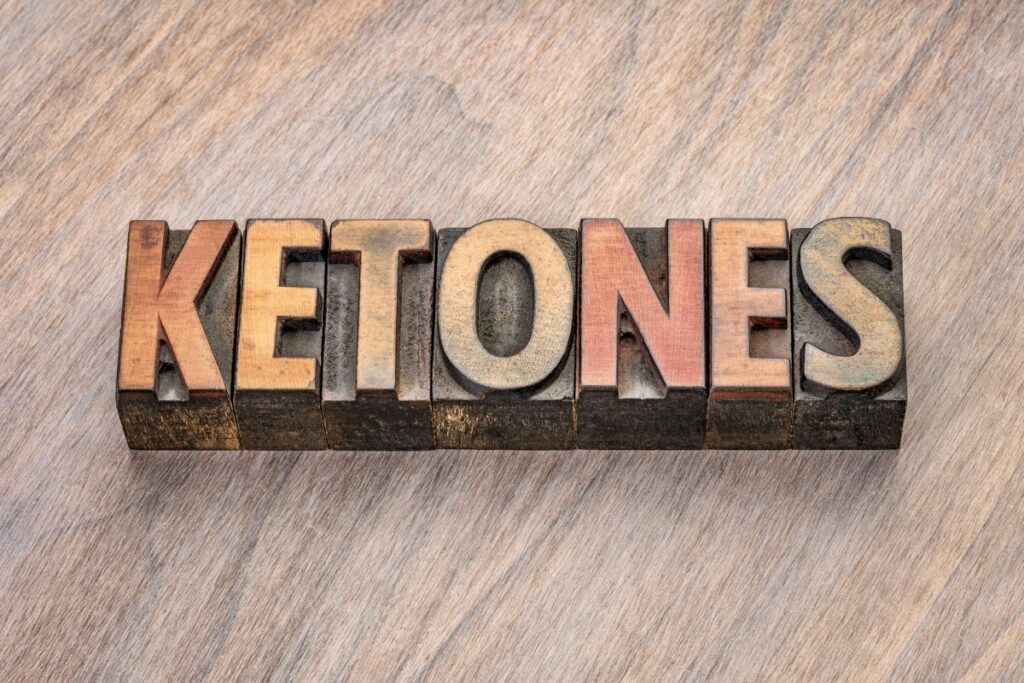
How to Do a Ketogenic Diet
To enter ketosis, do the following:
- Eliminate all carbs and sugar (>30 g per day), excluding dietary fibers. This can change in later phases of keto.
- Eat good fats, but stay within your calorie limits.
- Eat protein, but not enough to kick you out of ketosis (choose high-fat proteins to equal to 20-25% of caloric intake).
During the first three months (phases one and two) of your keto diet, the following foods are suggested:
- Avocados
- Coconut and unsweetened coconut products (not coconut water or sugar)
- Olives and olive oil
- Cracklings/pork rinds
- Rendered lard and tallow (unhydrogenated only)
- Grass-fed, organic, and fatty cuts of meats
- Sugar-free high-fat sausages, pepperoni, and other deli meats
- Fatty wild-caught or organic fish, such as salmon or sardines
- Seafood
- Butter and ghee
- Sugar-free mayonnaise made from avocado oil, MCT oil, olive oil, bacon fat, or lard
- Greens and other low-carb veggies, such as salad leaves, peppers, mushrooms, asparagus, kale, arugula, lettuce, spinach, cabbage, broccoli, cucumbers, and celery
During keto, you should avoid or minimize:
- Peanuts
- Cashews
- Almonds
- All grains and pseudo grains (quinoa)
- Legumes and beans
- High-carb vegetables
- Sugar-containing foods and condiments
- Non-caloric sweeteners
- Fruits
- High omega-6 vegetable oils
- Processed and charred meats
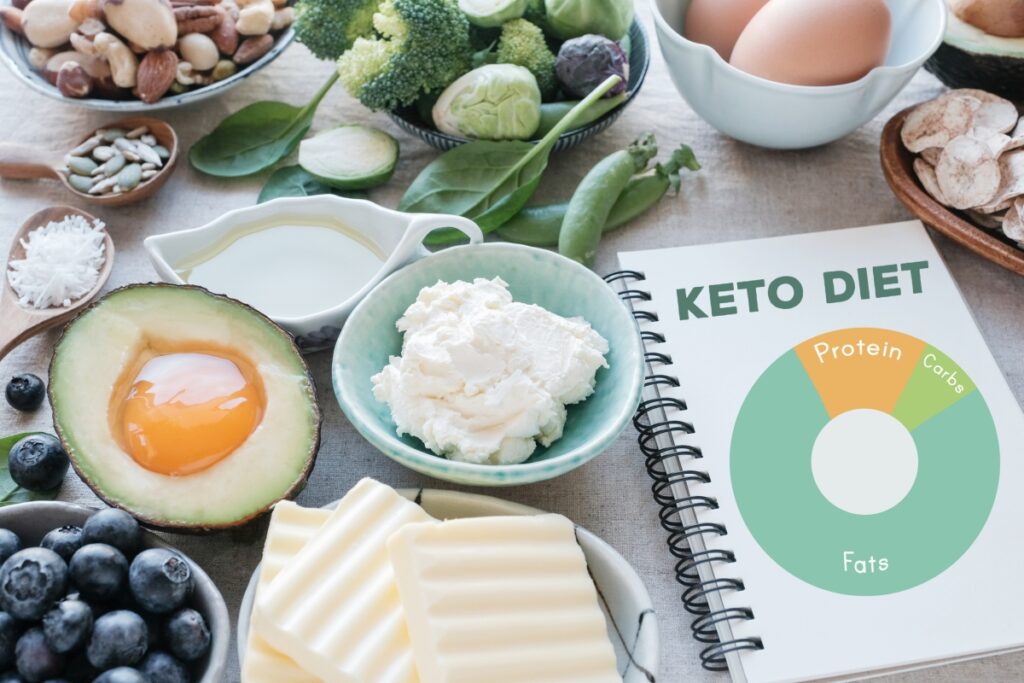
How Much to Eat on Keto
You may have heard you can eat however much you want on keto, provided they are the “right” foods, but you must stay within your caloric limits to stay in ketosis. Most people will be in a caloric deficit as they begin keto, which can make some people hungrier while others are less hungry.
For keto-adaptation (Phase 1), you should eat to your heart’s content. However, this phase is short, lasting only two weeks.
After Phase 1, your calorie needs to depend on your goals:
| Goal | Calories |
| Longevity and healthspan | Maintenance or slight caloric deficit (up to 15%) |
| Maximize athletic performance | Maintenance or up to 10% above maintenance |
| Build lean muscles | 300-500 calories above maintenance |
| Fat loss | 500-calorie deficit/day |
What Does a Typical Day on Keto Look Like?
You can still enjoy a variety of foods on keto. Here is an example below:
Day 1 - 3,000 calories menu
Breakfast
1 medium avocado
2 large eggs fried in 2 tbsp. ghee
2 beef fatty beef sausages
1 large plate of spring mix
3 tbsp. of olive oil to drizzle
Plain coffee
Lunch
2 cups roasted broccoli, drizzled with 2 tbsp. olive oil
6 oz. ribeye grass-fed steak
2 tbsp. fat to cook your steak, (e.g., ghee, coconut oil, or tallow)
6 tbsp. fat to top your steak, (e.g., olive oil, butter, marrow butter, or coconut butter)
Dinner
4 oz. wild-caught salmon
3 cups cauliflower, mashed with ¼ cup fat and ½ cup of coconut cream
2 tbsp. coconut butter for dessert
How to Do Keto: The Four Phases of Keto Adaptation
To be able to generate and burn ketones for energy efficiently, you need to get fat-adapted, which is divided into four phases. They are as follows:
Phase 1: Getting Into Ketosis (First 14 Days)
This phase is about forcing your body to use fat for fuel by depleting your glycogen stores and feeding it with mostly fat. During this phase, start with at least 65-75% of your calories as fat and 25-35% as proteins. Aim for less than 30 grams of carbs a day.
Your body might feel “out of fuel” as your ketone production catches up. Symptoms like fatigue may last from a few days to a week and are completely normal.
Phase 2: Becoming a Fat-Burning Machine (2 Weeks-3 Months)
After two weeks, your body learns to generate and burn ketones, so you will start to feel more energized. Fat will be your body’s primary fuel source. During this phase, you can start tweaking and optimizing your diet.
Experiment With Fasting
Keto and fasting work great together because your body is already fat-burning, it’s easy to start using stored body fat for energy. You can start by skipping breakfast and eating most of your food during lunch and dinner.
When you break your fast and eat large meals during your feeding window, you may experience some digestive issues.
We suggest using kApex, HCL Breakthrough, and Probiotic Breakthrough. kApex has some energizing ingredients that may keep you up, so you may want to use MassZymes for evening meals instead.
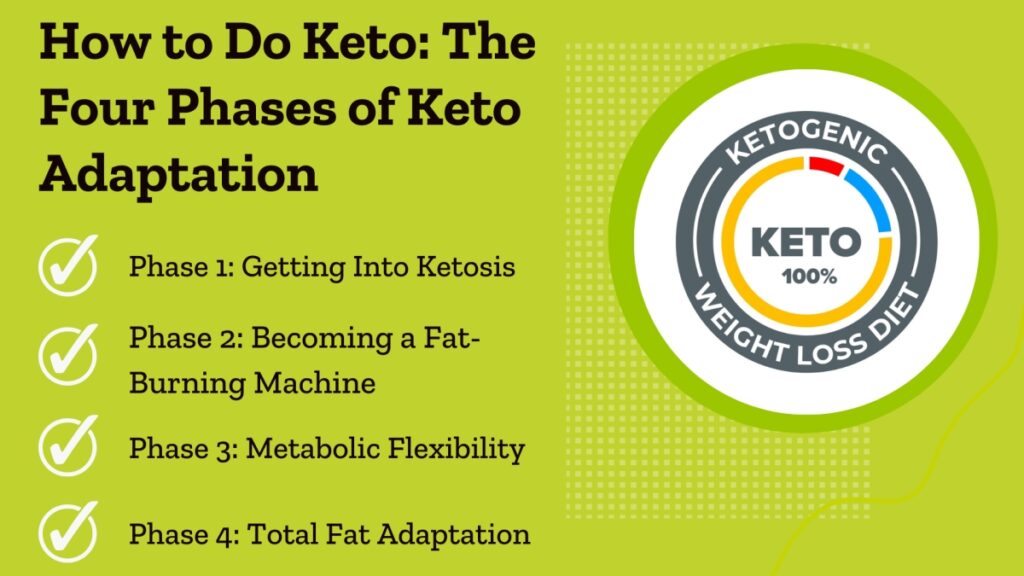
Phase 3: Metabolic Flexibility (3rd-12th Months)
At this stage, also known as fat adaptation, we recommend decreasing fats to 40-60%, increasing protein levels to 30-50%, and increasing carbs to 10%.
If you’re fat-adapted, you can occasionally enjoy a high-carb meal and will still be able to enter ketosis. You can also begin to try carb refeeds, which offer metabolic and psychological benefits.
Refeeding: How to Override Your Starvation Response
Leptin typically increases with insulin on standard diets. However, insulin and leptin levels are kept low in long-term ketoses, such as in a prolonged fast. If you’ve been practicing keto nonstop, some survival mechanisms can kick in and cause a stall in fat loss. You could experience:
- Reduced thyroid hormone
- Increased sex hormone
- Reduced ability to handle carbs
Refeeds will help your body still be able to process carbs, and they can also help you build muscle.
Your muscle mass expands all three sides of the BiOptimization triangle: health, aesthetics, and performance. You need insulin to gain muscles, and the easiest way to boost insulin in the short term is via a carb refeed. Not everyone can do a carb refeed, however—see the notes below on carb refeeding.
Reasons to do Carb Refeed
- Psychological break
- Anabolic response
- Leptin reset
- Improved exercise performance
- Metabolic flexibility
Reasons Not to do Carb Refeed
- Certain medical conditions
- Emotional, food addiction, or disordered eating
Refeed Supplements
- Berberine Breakthrough can help control blood sugar and make your cells more sensitive to insulin.
- Gluten Guardian contains both gluten and carb-digestive enzymes for high-carb meals. It helps eliminate gas and bloating from carbohydrate-rich foods, especially gluten. The gluten-digesting enzyme also helps you fully break down A1 casein to reduce inflammation from it.
- HCL Breakthrough can improve your stomach acid levels and ensure overall smooth digestion.
- Probiotic Breakthrough also helps break down gluten and other proteins.
Keto supplements, such as Gluten Guardian and HCL Breakthrough, will ensure that you have zero digestive distress, no matter what you eat when you are carb-loading.
Phase 4: Total Fat Adaptation (12+ Months)
Entering this phase means you've achieved complete metabolic flexibility and can move from keto to an occasional high-carb meal without leaving ketosis.
Ketogenic Diet Considerations
In the past 26 years, I have made many mistakes in my ketogenic diet journey—the following tips will help you enter ketosis smoothly while avoiding painful and costly mistakes:

Optimize Your Digestion
Many people experience digestive issues when they start a ketogenic diet. Early side effects can include diarrhea, constipation, belching, and acid reflux.
When you first start keto, your gut biome changes, and high-fat meals demand a lot of lipase and bile. Probiotic Breakthrough, one of our probiotic products, can help alleviate the issue.
You may also experience digestive distress from fat indigestion. We built a special digestive enzyme called kApex for keto eaters. It has a lot of lipases and proteases, which help digest fats and proteins. The dandelion root in it also stimulates bile flow, which is important for fat digestion. kApex also contains some energizing ingredients, which help you get through keto-adaptation fatigue.
Stomach acid is also crucial for digestion and stimulating natural bile flow. If you have heartburn and belching, HCL Breakthrough can help you with this.
A large high-carb refeed meal after a fast or doing keto for a while can shock your digestive system. The best keto supplements, such as MassZymes, are designed to maximize nutrient assimilation and refeeding benefits from these meals. Whereas Gluten Guardian is best to help with high-carb and gluten-containing meals like pizza, pasta, and bread. Berberine Breakthrough will help manage your blood sugar and drive glucose into the muscles.
Other than using natural keto supplements, some tips that can help your keto journey move along smoothly include:
- Minimize inflammation
- Don’t rely on A1 dairy for your fat intake
- Support your microbiome and gut barrier —Biome Breakthrough contains IgYmax and a synergistic blend of probiotics, prebiotics, and collagen. It effectively reduces bad bacteria and improves the colonization of good bacteria. It also helps promote a healthy gut barrier
- Add salt and minerals
- Optimize your fats (increase omega-3 fatty acids, be wary of saturated fats, and avoid trans and hydrogenated fats)
- Experiment with different types of carnivores
- Test, don’t guess. Ask your doctor for tests such as fasting blood glucose, HbA1c, liver enzymes, and other tests throughout your keto journey
When it comes to testing, you should also monitor hormones (with the DUTCH Complete test), use wearable biofeedback such as a smartwatch, and test your blood glucose level.
We recommend the Keto Mojo as the main tool to track ketosis and blood glucose. It also has the lowest price per test strip and has an app that makes it easier to record and track your results.
Pros and Cons of a Ketogenic Diet
Every diet has pros and cons to it. To help you decide if keto is right for you, here is a comprehensive list:
Health
Pros: Keto improves biological markers of longevity, reduces blood pressure, and promotes insulin sensitivity.
Cons: It can cause low blood pressure, kidney stones, gallbladder issues, and digestive problems.
Aesthetics: Lean Muscle Mass
Pros: Many people are less hungry as they lose body fat and adjust to the diet.
Cons: You won’t lose lean muscle mass, but insulin will always be low, making it difficult to gain muscle.
Athletic Performance
Pros: Keto supports endurance performance.
Cons: Strength, speed, and agility may drop, so power sports athletes should avoid keto.
Mental Performance
Pros: Ketosis boosts mental performance and balances out the brain and cravings.
Cons: Mental energy and focus can initially drop for someone from a high-carb diet.
Lifestyle
Pros: You can still eat a variety of foods.
Cons: It can be socially isolating to be on a restrictive diet.
Psychological Considerations
Pros: Keto can stabilize mood and mental health for some people.
Cons: You may miss your favorite non-keto foods, which can eventually cause keto to fail.
Whether a ketogenic diet is right for you depends on many factors. Always consult your physician before beginning any new diet regimen.
Those with genetic issues (some regions perform better on a high-carb diet), medical contraindications, major hormonal imbalances, severe adrenal burnout, athletes who need carbohydrates, and those with unfavorable biofeedback (such as high cholesterol) should avoid the ketogenic diet.
References
- Cunnane SC, Courchesne-Loyer A, Vandenberghe C, et al. Can ketones help rescue brain fuel supply in later life? Implications for cognitive health during aging and the treatment of Alzheimer’s disease. Front Mol Neurosci. 2016;9:53. doi:10.3389/fnmol.2016.00053
- Gershuni VM, Yan SL, Medici V. Nutritional ketosis for weight management and reversal of metabolic syndrome. Curr Nutr Rep. 2018;7(3):97-106. doi:10.1007/s13668-018-0235-0
- Sumithran P, Prendergast LA, Delbridge E, et al. Ketosis and appetite-mediating nutrients and hormones after weight loss. Eur J Clin Nutr. 2013;67(7):759-764. doi:10.1038/ejcn.2013.90
- Masino SA, Ruskin DN. Ketogenic diets and pain. J Child Neurol. 2013;28(8):993-1001. doi:10.1177/0883073813487595
- Anton SD, Martin CK, Han H, et al. Effects of stevia, aspartame, and sucrose on food intake, satiety, and postprandial glucose and insulin levels. Appetite. 2010;55(1):37-43. doi:10.1016/j.appet.2010.03.009
- Ruiz-Ojeda FJ, Plaza-Díaz J, Sáez-Lara MJ, Gil A. Effects of sweeteners on the gut Microbiota: A review of experimental studies and clinical trials. Adv Nutr. 2019;10(suppl_1):S31-S48. doi:10.1093/advances/nmy037
- Innes JK, Calder PC. Omega-6 fatty acids and inflammation. Prostaglandins Leukot Essent Fatty Acids. 2018;132:41-48. doi:10.1016/j.plefa.2018.03.004
- Micha R, Wallace SK, Mozaffarian D. Red and processed meat consumption and risk of incident coronary heart disease, stroke, and diabetes mellitus: a systematic review and meta-analysis: A systematic review and meta-analysis. Circulation. 2010;121(21):2271-2283. doi:10.1161/CIRCULATIONAHA.109.924977
- Mistlberger RE. Circadian food-anticipatory activity: formal models and physiological mechanisms. Neurosci Biobehav Rev. 1994;18(2):171-195. doi:10.1016/0149-7634(94)90023-x
- Brehm BJ, Seeley RJ, Daniels SR, D’Alessio DA. A randomized trial comparing a very low carbohydrate diet and a calorie-restricted low fat diet on body weight and cardiovascular risk factors in healthy women. J Clin Endocrinol Metab. 2003;88(4):1617-1623. doi:10.1210/jc.2002-021480
- Volek J, Sharman M, Gómez A, et al. Comparison of energy-restricted very low-carbohydrate and low-fat diets on weight loss and body composition in overweight men and women. Nutr Metab (Lond). 2004;1(1):13. doi:10.1186/1743-7075-1-13
- View all posts by The New Neander’s Physiological Literacy. Testosterone levels in athletes on carnivore diet. “N=1” of Paul Saladino and Shawn Baker. The New Neander’s Physiological Literacy. Published May 23, 2019. Accessed April 25, 2022. https://nneandersphysiologicalliteracy.wordpress.com/2019/05/23/testosterone-levels-in-athletes-on-carnivore-diet-n1-of-paul-saladino/
- Bergman BC, Cornier MA, Horton TJ, Bessesen DH. Effects of fasting on insulin action and glucose kinetics in lean and obese men and women. Am J Physiol Endocrinol Metab. 2007;293(4):E1103-11. doi:10.1152/ajpendo.00613.2006
- Ellulu MS, Patimah I, Khaza’ai H, Rahmat A, Abed Y. Obesity and inflammation: the linking mechanism and the complications. Arch Med Sci. 2017;13(4):851-863. doi:10.5114/aoms.2016.58928
- He M, Sun J, Jiang ZQ, Yang YX. Effects of cow’s milk beta-casein variants on symptoms of milk intolerance in Chinese adults: a multicentre, randomised controlled study. Nutr J. 2017;16(1):72. doi:10.1186/s12937-017-0275-0
- Rohr MW, Narasimhulu CA, Rudeski-Rohr TA, Parthasarathy S. Negative effects of a high-fat diet on intestinal permeability: A review. Adv Nutr. 2020;11(1):77-91. doi:10.1093/advances/nmz061
- Costantini L, Molinari R, Farinon B, Merendino N. Impact of omega-3 fatty acids on the gut Microbiota. Int J Mol Sci. 2017;18(12):2645. doi:10.3390/ijms18122645
- Cândido FG, Valente FX, Grześkowiak ŁM, Moreira APB, Rocha DMUP, Alfenas R de CG. Impact of dietary fat on gut microbiota and low-grade systemic inflammation: mechanisms and clinical implications on obesity. Int J Food Sci Nutr. 2018;69(2):125-143. doi:10.1080/09637486.2017.1343286
- Lang JM, Pan C, Cantor RM, et al. Impact of individual traits, saturated fat, and protein source on the gut microbiome. MBio. 2018;9(6). doi:10.1128/mBio.01604-18
- Wolters M, Ahrens J, Romaní-Pérez M, et al. Dietary fat, the gut microbiota, and metabolic health – A systematic review conducted within the MyNewGut project. Clin Nutr. 2019;38(6):2504-2520. doi:10.1016/j.clnu.2018.12.024
- Carvalho GCBC, Moura CS, Roquetto AR, et al. Impact ofTrans-Fats on Heat-Shock Protein Expression and the Gut Microbiota Profile of Mice: Hydrogenated oil, HSPs & gut microbiota…. J Food Sci. 2018;83(2):489-498. doi:10.1111/1750-3841.13997
- Ge Y, Liu W, Tao H, et al. Effect of industrial trans-fatty acids-enriched diet on gut microbiota of C57BL/6 mice. Eur J Nutr. 2019;58(7):2625-2638. doi:10.1007/s00394-018-1810-2
- Bourdua-Roy E, Scher B. Lab tests —. Diet Doctor. Published September 3, 2018. Accessed April 25, 2022. https://www.dietdoctor.com/low-carb/for-doctors/lab-tests
- Saben JL, Boudoures AL, Asghar Z, et al. Maternal metabolic syndrome programs mitochondrial dysfunction via germline changes across three generations. Cell Rep. 2016;16(1):1-8. doi:10.1016/j.celrep.2016.05.065
